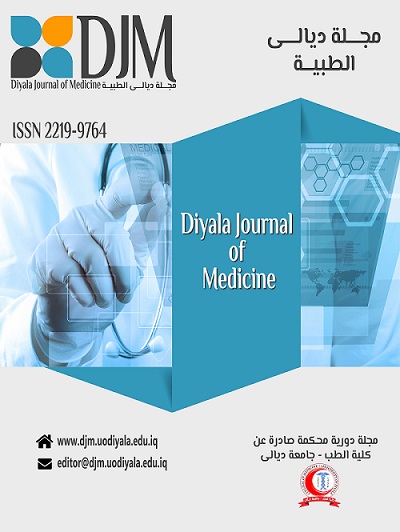Abstract
Background: Needle stick injuries are serious professional hazards in the
transfer of certain types of blood borne diseases such as hepatitis B virus,
hepatitis C virus, and human immunodeficiency virus among healthcare
workers.
Objective: Firstly, to determine the prevalence and factors related to
needle stick injuries. Secondly, to assess related safety measures among
nurses in Erbil hospitals.
Patients and Methods: A hospital based cross sectional study including a
sample of 452 nurses. A representative supple sample size was calculated
by using Epi info version 7.The sample was proportional to the population
of nurses in each hospital. A convenient sampling technique was adopted
in selection of studied sample from different teaching hospitals in Erbil
city. Data were collected by using self-administered questionnaire, which
included socio-demographic characteristics of participants and questions
regarding needle stick injuries and preventive measures. (SPSS, Chicago,
IL, USA), version 26) was applied for data entry and analysis. P value of ≤
0.05 was considered as statistically significant.
Results: Out of a total (452) study population, 56.9% were females and
43.1% were males. The mean ± SD of age was 36.2 ± 5.41, ranging from 21
to 54 year. The prevalence of needle stick injuries was 87.4% among nurses,
and the widespread activity leading to NSIs was recapping of needles (81%).
The average of non-reporting to supervisor of infection control was 77.2%.
The majority of NSIs took place in the morning (70.5%). There was a
statistically significant association between NSIs and use of PPE, secure
disposal of needle in the safety box, and use of auto-disable syringe during
injection, in which NSIs were highest among those who not use or
sometimes use the above mentioned safety measures, (P<0.001, P=0.002,
and P=0.003 in respectively).
Conclusion: This study showed that transverse needle stick injuries
among nurses are very high and pose a rise in hazards for professional
exposure to diseases transmitted by blood. The majority of nurses are not
reporti
transfer of certain types of blood borne diseases such as hepatitis B virus,
hepatitis C virus, and human immunodeficiency virus among healthcare
workers.
Objective: Firstly, to determine the prevalence and factors related to
needle stick injuries. Secondly, to assess related safety measures among
nurses in Erbil hospitals.
Patients and Methods: A hospital based cross sectional study including a
sample of 452 nurses. A representative supple sample size was calculated
by using Epi info version 7.The sample was proportional to the population
of nurses in each hospital. A convenient sampling technique was adopted
in selection of studied sample from different teaching hospitals in Erbil
city. Data were collected by using self-administered questionnaire, which
included socio-demographic characteristics of participants and questions
regarding needle stick injuries and preventive measures. (SPSS, Chicago,
IL, USA), version 26) was applied for data entry and analysis. P value of ≤
0.05 was considered as statistically significant.
Results: Out of a total (452) study population, 56.9% were females and
43.1% were males. The mean ± SD of age was 36.2 ± 5.41, ranging from 21
to 54 year. The prevalence of needle stick injuries was 87.4% among nurses,
and the widespread activity leading to NSIs was recapping of needles (81%).
The average of non-reporting to supervisor of infection control was 77.2%.
The majority of NSIs took place in the morning (70.5%). There was a
statistically significant association between NSIs and use of PPE, secure
disposal of needle in the safety box, and use of auto-disable syringe during
injection, in which NSIs were highest among those who not use or
sometimes use the above mentioned safety measures, (P<0.001, P=0.002,
and P=0.003 in respectively).
Conclusion: This study showed that transverse needle stick injuries
among nurses are very high and pose a rise in hazards for professional
exposure to diseases transmitted by blood. The majority of nurses are not
reporti
Keywords
Erbil
Iraq
Needle Sticks Injury
Nurses
